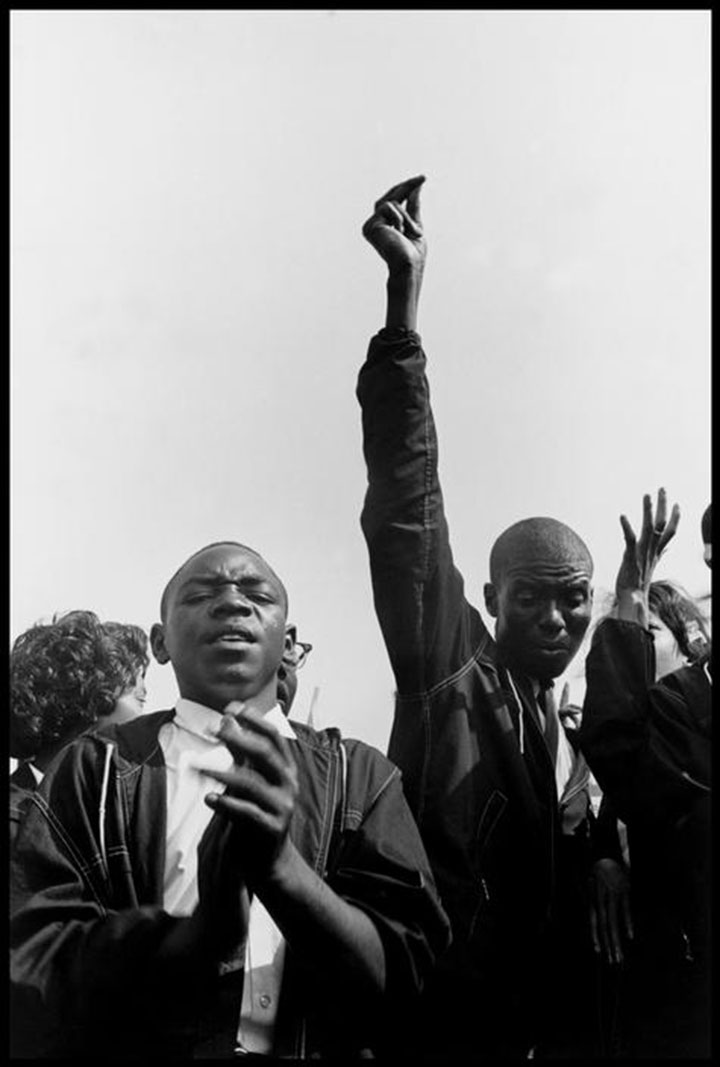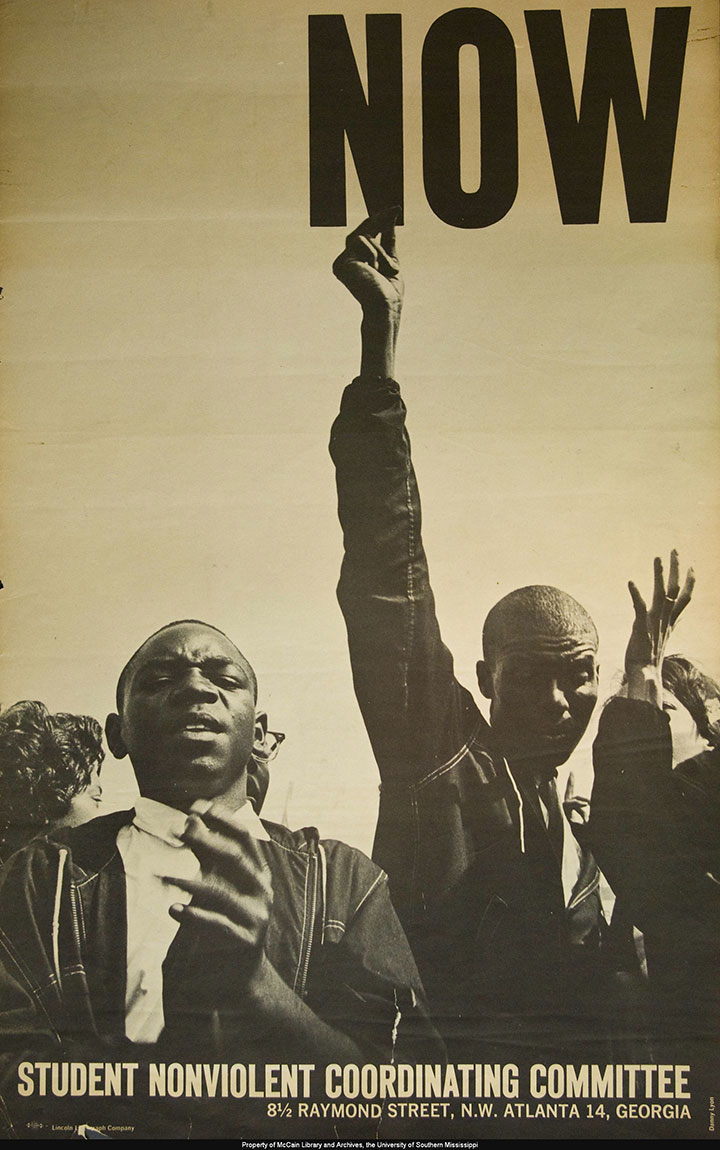Join us for conversations that inspire, recognize, and encourage innovation and best practices in the education profession.
Available on Apple Podcasts, Spotify, Google Podcasts, and more.
Learning Targets
School Integration and the Demand for Educational Reform
The 1954 U.S. Supreme Court decision Brown v. Board of Education ruled that state laws allowing segregated schools were unconstitutional. Schools that separated students along racial lines—“white only” schools and “non-white” schools, for example—were deemed unequal and thus were required to be integrated. Schools that segregated students were inherently unequal in funding and budgets, opportunities for extracurricular activities, and overall learning and achievement. Resistance to desegregation—black and white students attending school together—was a powerful force in the South. For example, Virginia and other states closed public schools following the Court’s decision.
The photographs in this activity explore three case studies of school integration efforts, and the resistance that met these changes to the unconstitutional status quo: Little Rock, Boston, and Los Angeles. You will notice that these three schools are in three different regions of the United States. They also involve different groups of students and authorities. Background for each group follows. Of course, the school conditions were just one of many economic and social injustices.
The Little Rock Nine
In Little Rock, integration of schools to include both black and white students was a direct result of the 1954 Brown decision. In September 1957, when nine African American students attempted to enter Little Rock’s Central High School for the first time, Governor Orval Faubus sent in the Arkansas National Guard to block the students from the school. Weeks later, President Eisenhower sent in the 101st Airborne Division of the United States Army, and took command of the Arkansas Guard to enforce the law and admit the Little Rock Nine to Central High.
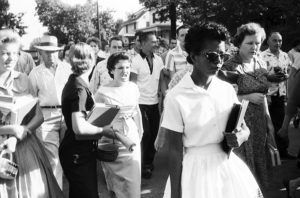
The U.S. Army left Little Rock at the end of September, leaving the federalized Arkansas National Guard to maintain order and allow the school integration to go forward.
Selected for their academic excellence and willingness to serve as racial pioneers, the nine young students endured hostility and even violence throughout the year. But most of them completed their education at integrated Central High School, going on to college. They became role models for other young black Americans enlisting in the crusade to break down the racial barriers they confronted. In 1958, the NAACP honored the Little Rock Nine with its highest award: the Spingarn Medal, previously won by Martin Luther King, Jr. and Thurgood Marshall.
In September of 1958, Little Rock closed the public schools entirely. White students attended private schools or schools outside the city, while black students were left with no school to attend. This was short lived: In December 1959, the Supreme Court formally ruled that the schools must be opened and must continue with school desegregation efforts, and the Little Rock school board finally reopened the schools. For additional background, visit the Encyclopedia of Arkansas.
Boston Busing Riots
The Racial Imbalance Act passed by the Massachusetts legislature in 1965 ordered school districts to integrate their student bodies or risk losing state school funding. It is noteworthy that this act was passed eleven years after the Brown v. Board of Education ruling. Still, the Boston school leaders moved slowly, unwilling to comply because it would require busing students from highly segregated neighborhoods into other areas of the city. Black parents, with the support of the NAACP, put forth that the school system’s segregation was unconstitutional. Judge Wendell Garrity, of the U.S. District Court for the District of Massachusetts, ruled in June 1974 that the Boston Public Schools were practicing a form of racial discrimination. To correct this, and to properly enforce a state law requiring racial balance in schools, the school system must adopt a busing plan. Highly controversial, busing began in September 1974 (nine years after the Racial Imbalance Act was passed).
State troopers were needed to even open the schools. At South Boston High, where white ethnics predominated, only about 100 students came on the first day of school integration. At the predominately black Roxbury High School, only 13 of approximately 550 white students who were scheduled to be bussed showed up. Racial hostility and violence occurred, with white parents leading the charges that white suburban students were not obliged to participate in the city school desegregation. In October 1965, 6,000 Bostonians, predominantly from Irish American and Italian American neighborhoods, marched against the South Boston High School busing.
As the years passed, white opposition to school desegregation led to massive white flight from Boston public schools, not dissimilar to what happened in cities in Virginia, North Carolina, and other southern states. By 1988, students in the Boston school district had withered from about 100,000 to 57,000, with only 15 percent of them white. The documentary series “Eyes on the Prize,” offers additional background information; visit PBS’s American Experience.
East Los Angeles Chicano Student “Blowouts”
On March 6, 1968, Salvador (Sal) Castro, a young social studies teacher at Lincoln High School in East Los Angeles, led hundreds of students in walkouts, known as “blowouts,” to protest long-standing racial bias and inequalities against Latino students in the Los Angeles Unified School District. While the schools were not officially segregated, Latino students believed that the facilities, curriculum, and treatment by the (mostly) white teachers programmed them for failure and limited their access to higher education. Led by Castro, the students demanded ethnic studies courses, bilingual education, more Latino teachers, and other changes. They hoped that this would give them equal educational opportunities and help them gain access to college, rather than programming them for menial jobs.
Activities
The East Los Angeles walkouts spread rapidly to other eastside high schools in Los Angeles, and then to schools throughout the Southwest. Thousands of students joined the protests, triggering a new era of Chicano activism that paralleled the African American civil rights movement of the 1960s. Castro was arrested, jailed, and charged with felony conspiracy and disturbing the peace. Later acquitted, he served for many years as a social studies teacher before he died in 2013.
The 1968 walkouts were the leading edge of Latino activism that would continue for decades and create a new generation of Latino politicians and professionals. Using similar walkout tactics, they also inspired later protests—most importantly, the 1994 student walkouts to protest California’s Proposition 187 that denied public health care, education, and other social services to illegal immigrants. Read a transcript of a eulogy for Salvador Castro. It provides a helpful overview of the student-led “blowouts.”
As an introduction, hand out copies of photographs 1008, 1010, and 1068 or project them. Ask students to describe what they see in the photos about racial segregation and to explain whether they have seen photographs similar to these before.
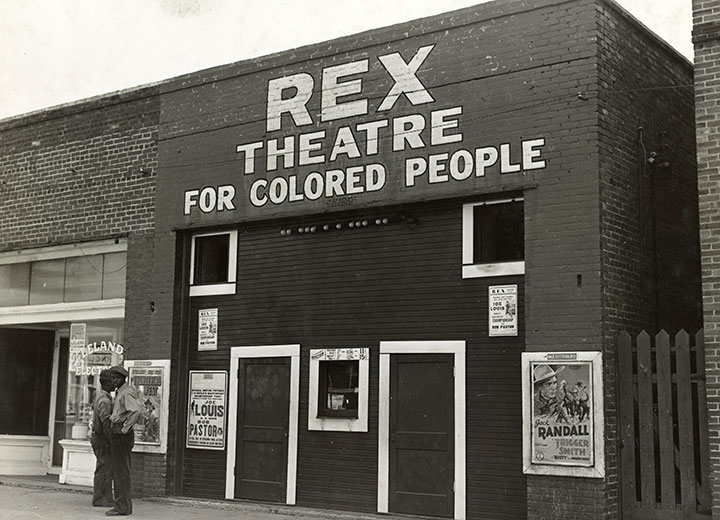
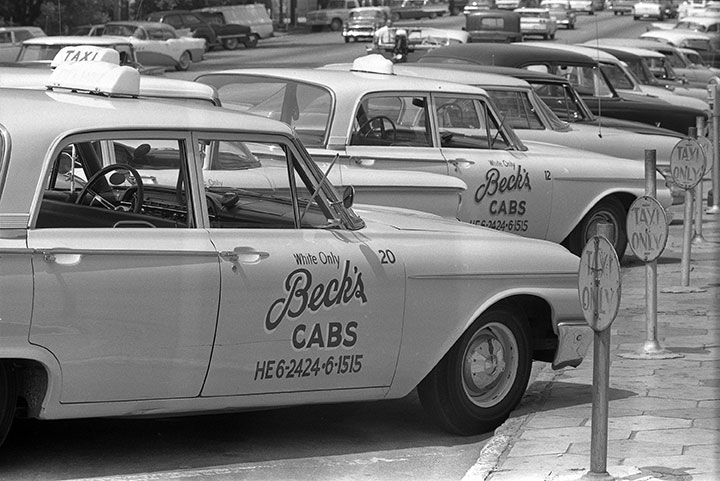
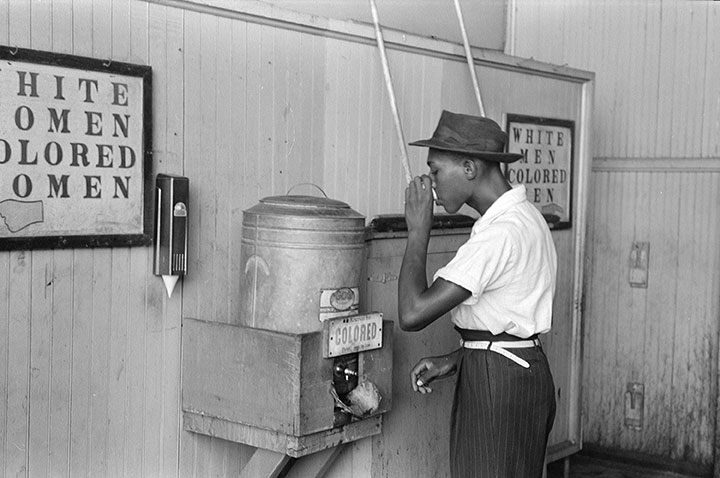
After this initial conversation, hand out copies of photographs 1005, 1007, 1011, 1014, 1027, 1035, 1050, 1057, and 1069 or project them. Ask students to describe what they see in the photos. Have small groups discuss the photos, take descriptive notes, and then share with the class.
Ask students to share what they know. Provide background as needed. Following this initial interaction with students about background, begin to compare photographs. The following photographs and sequence provides an intentional examination.
Have students look at photographs 1050 and 1057 and state what they can learn from this comparison.
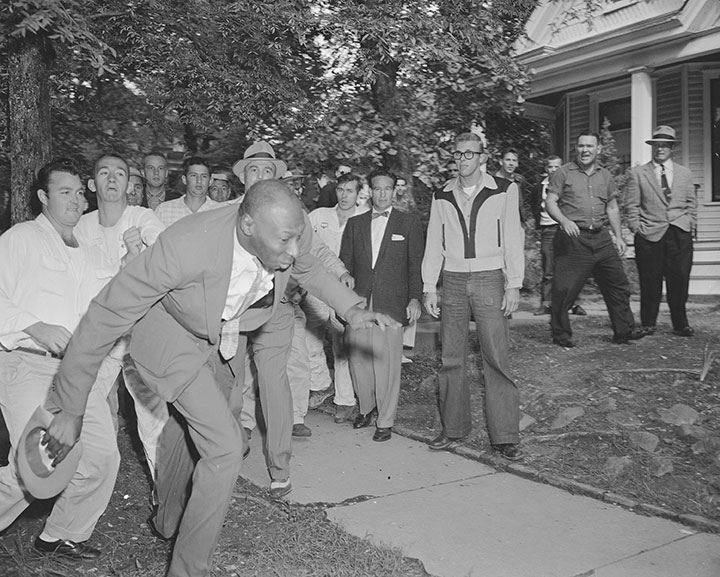
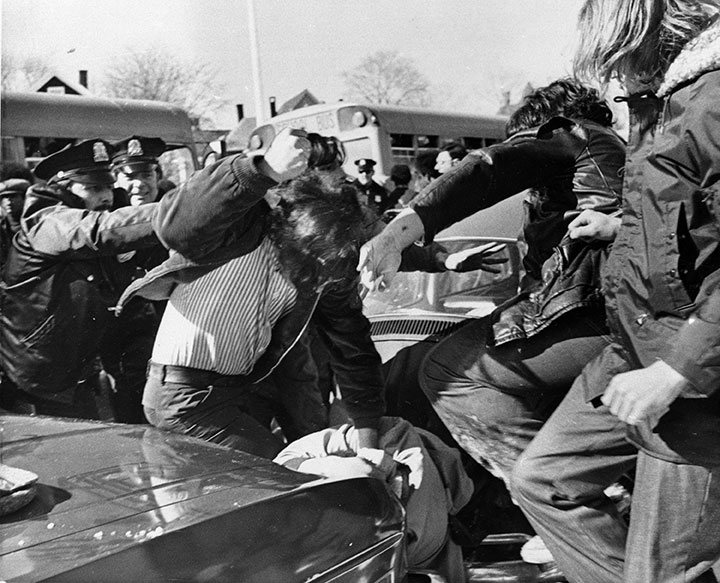
Next, have students look at photographs 1014 and 1027 and describe what the individuals depicted might have been feeling when the photographs were taken. Ask them to provide evidence to support their answers.
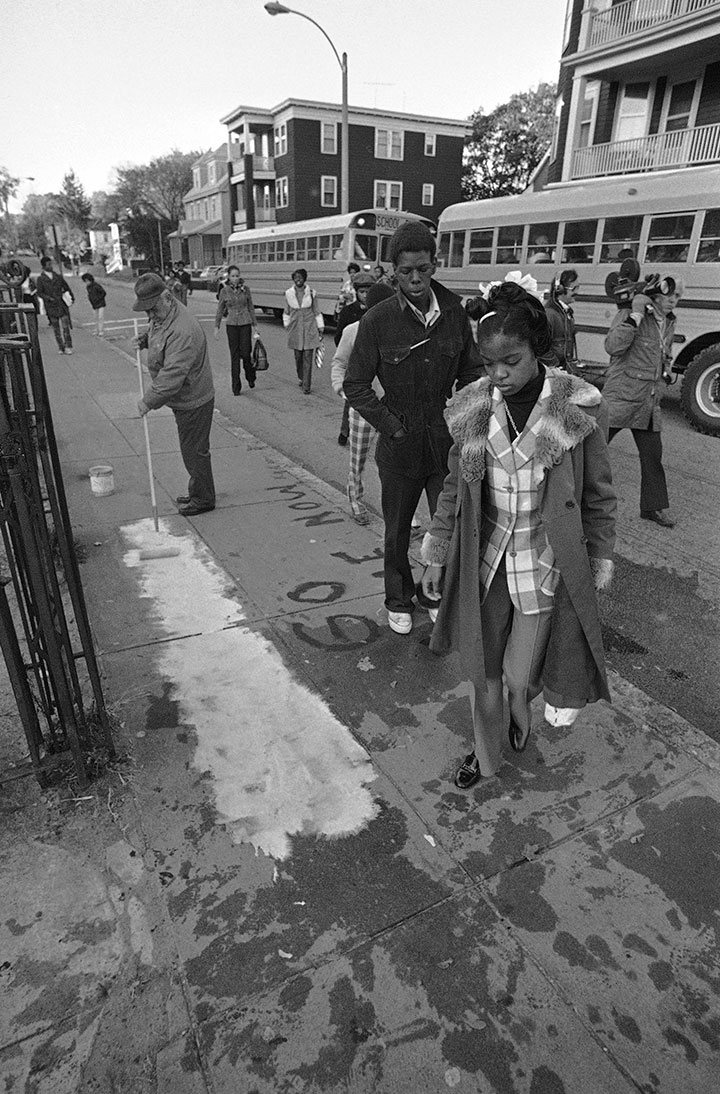

Then have students look at photographs 1011 and 1035 and describe similarities, and then the differences, between the scenes caught in the pictures.

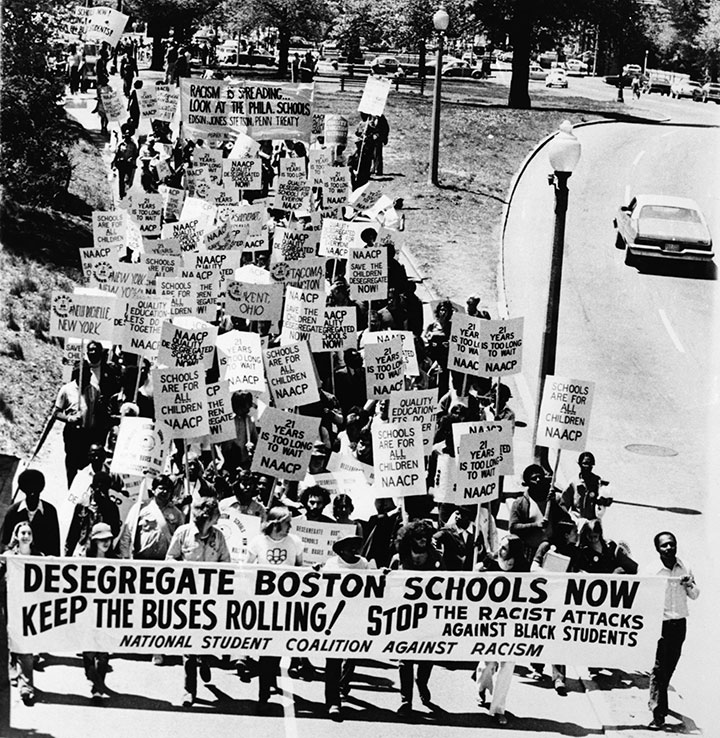
Next, hand out copies (or project) of photographs 1005, 1007, and 1069. Students may know less about the Los Angeles Chicano student “blowouts,” so provide a small amount of context for them. Then ask students to describe what they see in the photos.
Note: you may find it useful to review the Focus In tool to assist in the analysis of photographs like these.
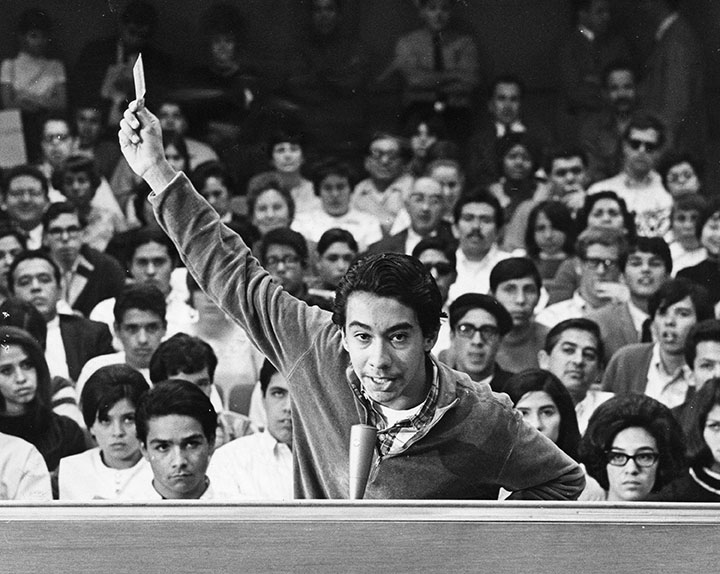
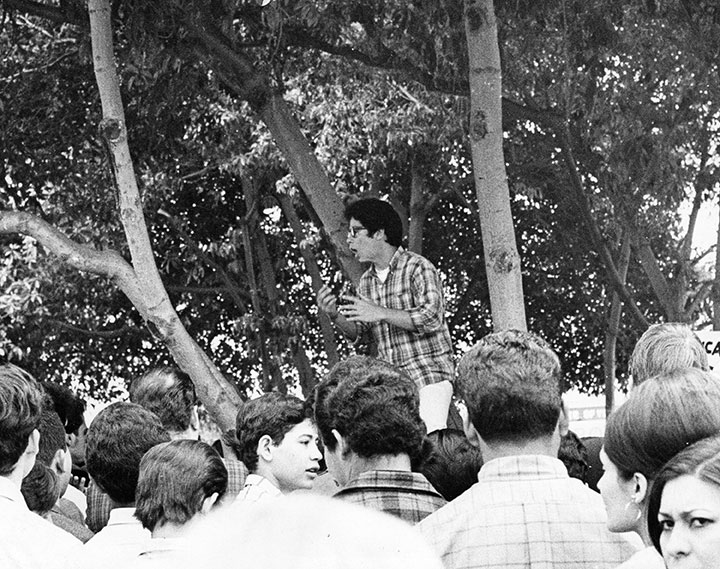
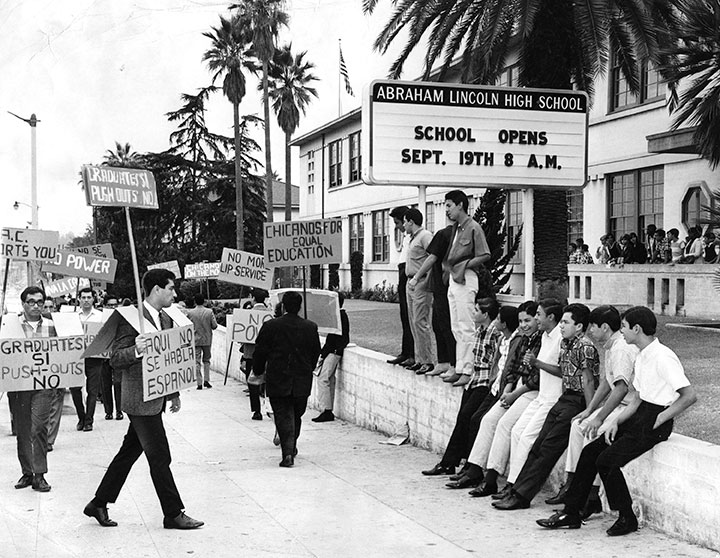
Have students refer to all of the photographs from this part of the activity, and briefly write down what similarities exist amongst these three examples of equity and desegregation in the public schools. Then have students write down two or three differences.
After discussion, or after the students share their written work, see if this exercise sparked questions about change and resistance in Little Rock, Boston, or Los Angeles. For instance, the Boston photograph showed evidence of both support and opposition for busing (and, therefore, for integration of the schools). Students may wonder whether there were supporters of integration in Little Rock or in the South. They may also wonder about the reaction to the Chicano student blowouts. They may also consider the benefit or burden of movements starting from within (a teacher and students in LA) or starting from outside sources (Supreme Court ruling in Little Rock). Did this affect the type of protests and the success of the movements? Each of these questions could provide a starting point for an inquiry project seeking to find answers.
